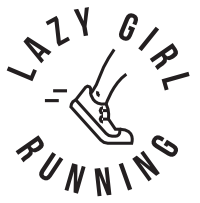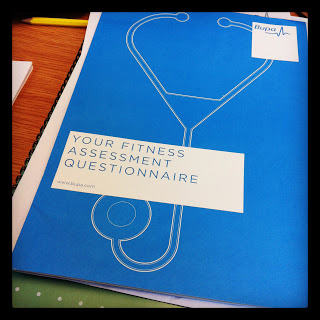About five years ago a good friend of mine started running. She began with a couple of laps round the park and gradually built up to a charity 5k event and eventually a 10k. Like most people, she found the early days of running and trying to get fitter pretty tough. What we didn’t know back then was that, unlike most people, she had an undiagnosed heart condition.
Every so often we see the saddening headlines concerning runners that have collapsed and died during a marathon or half marathon. And the headlines a couple of weeks ago concerning Fabrice Muamba show how, while such events are very rare, they can happen to anyone regardless of fitness.
So, when Bupa invited me to have one of their fitness assessments I thought, with two marathons coming up in the next two months, it would be a good idea to give myself a running MOT.
The assessment took place in one of Bupa’s centres and it felt more like a trendy spa than a doctor’s surgery. A health advisor took my vitals and then started with some simple tests to measure my strength, flexibility and lung capacity. While my lungs scored top marks, lack of stretching was evident on my flexibility test.
Some electrodes attached to my hands and feet also revealed that, while my weight and body fat are good, I’m a little low on muscle or ‘lean tissues’. The prescription: start doing some weights and eating more protein.
Next I was hooked up to an ECG to look at the activity of my heart. Many European marathons now ask for medical clearance of competitors including an ECG before they’ll allow you to take part – so this puts me one step closer to running Venice. After a few reading taken with me lying down a doctor joined us and I was directed onto the treadmill. The ECG, a blood pressure cuff and a breathing pipe for me to suck on would together show just what was going on inside my body as I ran.
The plan was to take me to 85% of my estimated maximum heart rate in order to calculate my VO2 max which took me up to a relaxed running pace. Once there the treadmill was stopped and the health advisor unplugged me before going through my results. The good news is that I’m as fit and healthy as a marathon runner should be and, after the ECG is checked by a cardiologist, I’ll have a piece of paper for the authorities at the Venice Marathon to prove it.
What the tests revealed I could do with a bit of work on though is my metabolic rate and the point at which my body starts to rely heavily on carbohydrate instead of fat for fuel. The cure for this: running and lots of it. The health assistant went through the results with me and will write up a report to send out to me for future reference. Overall it was an interesting experience that gave me some useful pointers on areas to improve and a good indicator of my current fitness.
As for my friend, many trips to the GP, a lot of persistence and a few trips to the hospital and she was given a diagnosis that would turn most people’s lives upside down. Thankfully she’d listened to her intuition that something wasn’t right and hadn’t decided to sign up for a marathon. But when, a year later, I came to run my first marathon – there was only one charity and one cause that I’d consider running for. And having her cheering me on at mile 23 was the best boost you could ask for.

